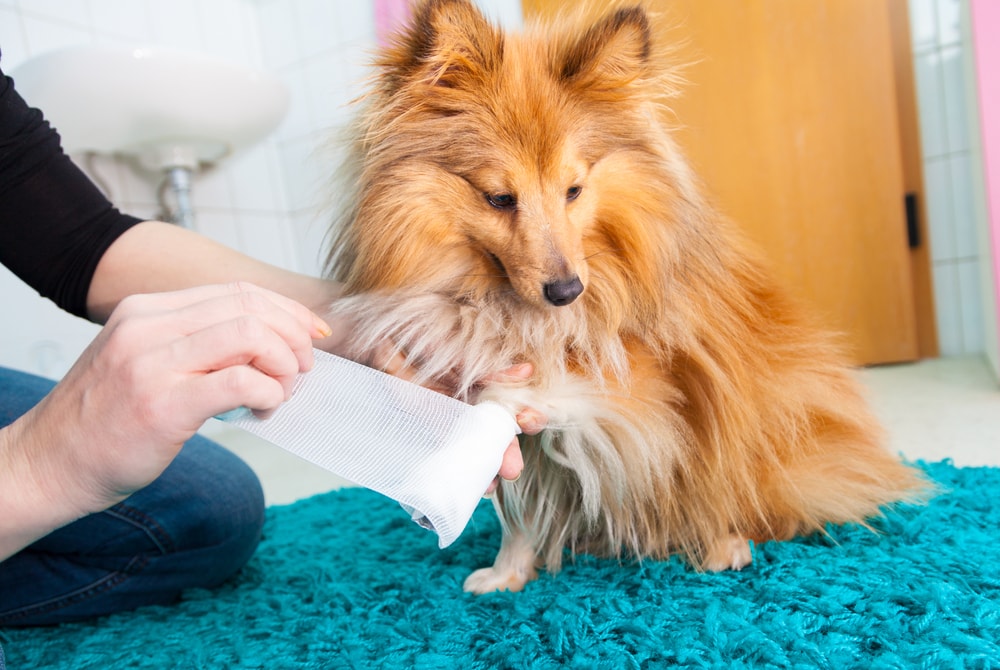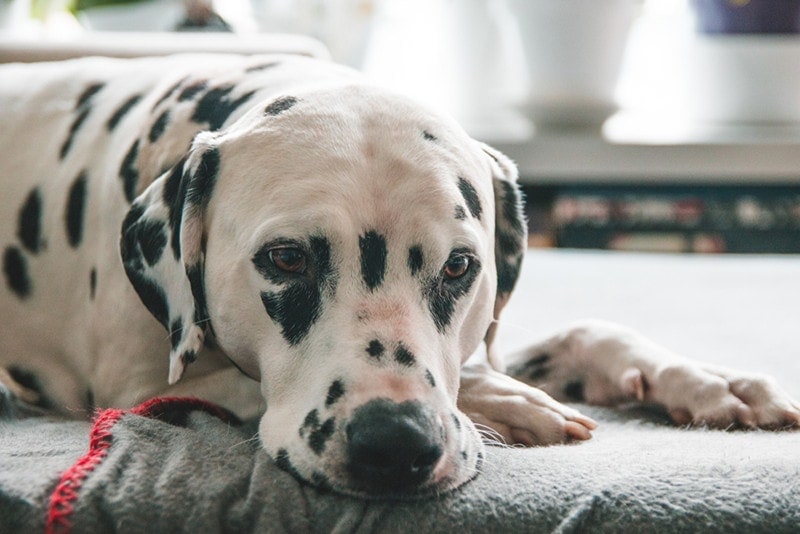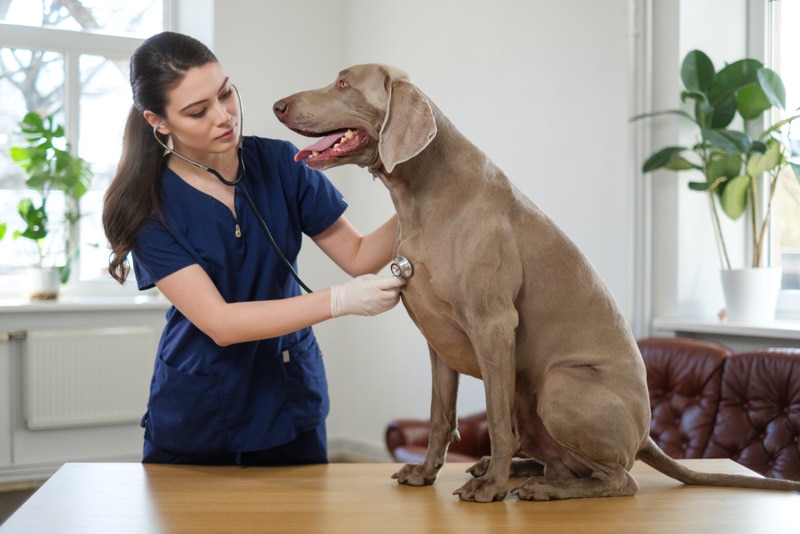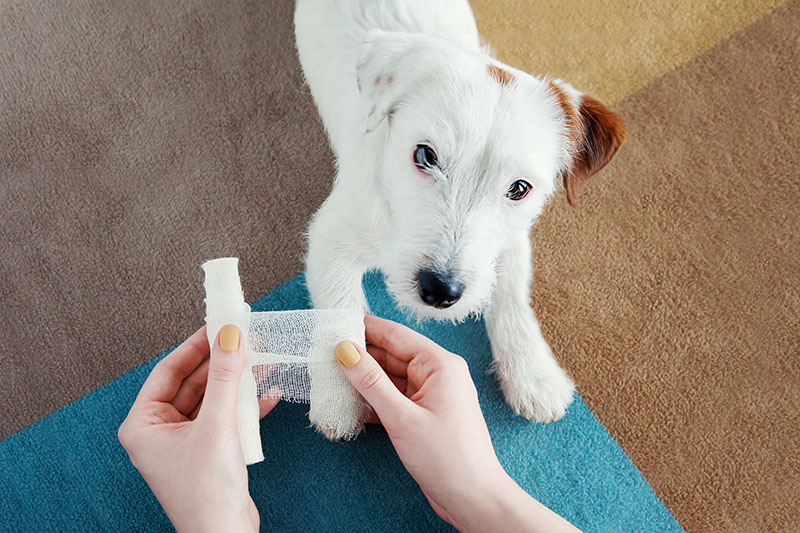Can You Use Neosporin on Dogs? Vet Approved Facts & FAQ

Updated on

Like their humans, dogs can easily scrape or cut themselves, but they don’t have the privilege of running to their medical aid kit for a quick fix; instead, they rely on us as their owners. An effective go-to when one has scraped or scratched themselves is Neosporin, and you likely have a tube in your medical box, but is it safe to use on dogs?
The answer is not straightforward. Neosporin is formulated for humans and is not necessarily safe for dogs. While it can treat your pup’s wound, there are situations where it is not safe to use it on your furry friend.
What is Neosporin?
Neosporin is a topical wound care product that is made up of three antibiotics: bacitracin zinc, polymyxin B sulfate, and neomycin sulfate. They prevent infection by killing bacteria and moisturizing the cut to promote healing. It is intended to treat minor, superficial cuts and scrapes.

Can You Use Neosporin on Dogs?
A small amount used correctly is not harmful to your dog. When it is applied to your dog’s skin, it provides a barrier against bacteria while killing off any existing bacteria.
However, there are instances where applying Neosporin can harm your pet. If your dog’s wound is on its foot or somewhere it can easily reach, it will likely try to lick it. This not only makes the Neosporin ineffective, but it can also make your dog ill. Even while licking a tiny bit of the Neosporin might not be harmful, it’s not worth the risk.
The primary concern about ingesting Neosporin is its effect on the dog’s microbiome, which can cause vomiting and diarrhea. A bandage over the wound could help, but some dogs won’t tolerate it and will try to lick it off. Furthermore, if it is not bandaged well, it can reduce blood flow.
Another instance where Neosporin is not beneficial is if the wound is deep, bleeding heavily, or severe. If your dog’s wound is deep and not bleeding, you should get it to the vet as soon as possible.
Your dog could also have an allergic reaction to the Neosporin. This can result in rashes, hives, facial swelling, and in more serious but rare cases, anaphylaxis.
The general opinion is that dogs don’t benefit from topical medications like Neosporin for minor wounds. Minor wounds typically heal without the need for topical medications, provided the dog doesn’t lick the area. It’s best to clean the wound and call your veterinarian for guidance. Unless your veterinarian specifically recommends it, avoid using treatments like Neosporin.

How to Use Neosporin on Dogs
If you feel that your dog’s wound will benefit from Neosporin, and your vet gives you the go-ahead, you should first do a patch test to ensure that your dog won’t have an allergic reaction. Pick an area of the skin that your dog can’t reach and dab a small amount of Neosporin. Monitor the area to see if your dog develops any signs of a reaction, such as redness, rash, or swelling.
If your dog appears safe from allergic reactions, then first clean the wound with some water and pat it dry. If the wound is a penetrated wound, such as a bite, stop what you are doing and get to your vet as soon as you can. Use a small amount, about the size of half a Q-tip, and gently spread it on the wound. If your dog allows you to, consider wrapping it in a bandage to keep your pup from licking it and from any dirt and debris getting stuck to it.
What to Do if Your Dog Licks Neosporin?
If your dog has licked the area where they have put Neosporin, clean it off and call your vet for some guidance. Thankfully, Neosporin is not poisonous, but your vet will tell you if your dog needs veterinary attention. They can also provide you with advice on what to do if your dog has gastrointestinal side effects after ingesting Neosporin.
If, for some reason, your dog ingested a significant amount of Neosporin, get it to the vet immediately.

How You Can Treat Your Dog’s Wounds
Your dog will experience an accident in some part of its life, and there will be a wound for you to nurse. When this time comes, it is important for you to know what to do. First, if the wound is serious, you should contact your vet right away. If the wound is minor, here is what you can do to help your dog.
- If there is bleeding, apply pressure to help make it stop. You can use a clean paper towel or a gauze. If the bleeding does not stop, take your dog to the vet.
- Rinse the wound with warm water to remove any dirt and debris. You can do this by filling up a large syringe and using it to flush the wound.
- Use the same syringe filled with dog-safe antibacterial cleanser and flush the wound again. Blot the area dry with gauze.
- Monitor your dog’s wound over the next few days until it is visibly healing. If it doesn’t seem to be healing or is becoming red and swollen, take your dog to the vet.
- Ensure you have a medical aid kit stocked for your dog at all times so that you are ready to treat a wound if necessary.
- Try to prevent the unnecessary risk of wounds by removing any sharp objects on the ground in your home, checking your lawn for anything that may hurt your dog, checking your fences for any stray wires, removing thorny branches from the ground, and providing dog booties when hiking or walking.

Conclusion
Neosporin can be effective in cleaning and healing a dog’s wounds, but it can also cause harm if your dog has an allergic reaction or ingests too much of it. If you need to use Neosporin on your dog, first talk to your vet. Your dog will likely be okay if it licks a tiny amount, but you need to ensure it doesn’t ingest too much. Minor wounds are very likely to heal on their own, so don’t go rushing for the Neosporin. If you feel like you need to help it along, first wash it and then use a dog-safe topical cream. Always have a dog wound care kit ready, so you don’t have to rely on medications that may pose a risk to your companion.
Featured Image Credit: Pearl PhotoPix, Shutterstock











